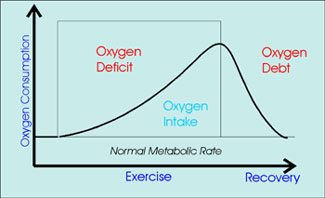Have you either tried, thought about trying, or read about these running protocols to get you running a mile or a five thousand meter (5K) race? If you are not familiar with these types of schedules, then follow this link to see a selection of programs that commonly are offered to get you running that first mile or 5K. You could follow those programs, but end up like this:
Just because you've decided to start running doesn't mean that your body is ready to run. Furthermore, even if your body can tolerate the running now, it doesn't mean that it's having a positive effect on you. Running is one of the best exercises for cardiovascular health, but like all powers, it must be used wisely.
Muscle tissue stores all of the ATP that you need quickly, but you need to have an efficient aerobic metabolic system to manage the changing levels of acidity produced by longer term running.
Just because you've decided to start running doesn't mean that your body is ready to run. Furthermore, even if your body can tolerate the running now, it doesn't mean that it's having a positive effect on you. Running is one of the best exercises for cardiovascular health, but like all powers, it must be used wisely.
To achieve your goal of successfully running, you need to understand oxygen deficit
As you work in an aerobic phase, your body is using oxygen to get rid of lactic acid that is building up and making you feel hot and sore. There is a certain pH in which your muscles are able to function. Pass that threshold, and you're toast until you recover. If your body can't bring in enough oxygen to generate more energy (ATP), then it grabs energy from anaerobic phases, which means you are going to run out of gas, fast. Reaching that point is called oxygen deficit.Muscle tissue stores all of the ATP that you need quickly, but you need to have an efficient aerobic metabolic system to manage the changing levels of acidity produced by longer term running.
So what's my point? Build up muscle and run less.
These programs have you running 3-4 times per week. Maybe your body will be able to respond quickly to the sudden changes, but maybe it won't. It will depend on ones level of conditioning. A deconditioned person may not respond well to all of that walking and running required for these programs. Walking a long distance with either poor posture, incorrect mechanics of movement, or low lactic acid thresholds will be in for some uncomfortable results. Getting yourself in better physical shape by improving muscle tone and flexibility will give you better results in running with fewer injuries and less time spent runningWhat are the Fundamental Exercises for Getting in Shape to Run
Three major factors contribute to a successful run:- Leg/core strength
- Oxygen uptake
- Flexibility



Comments
Post a Comment